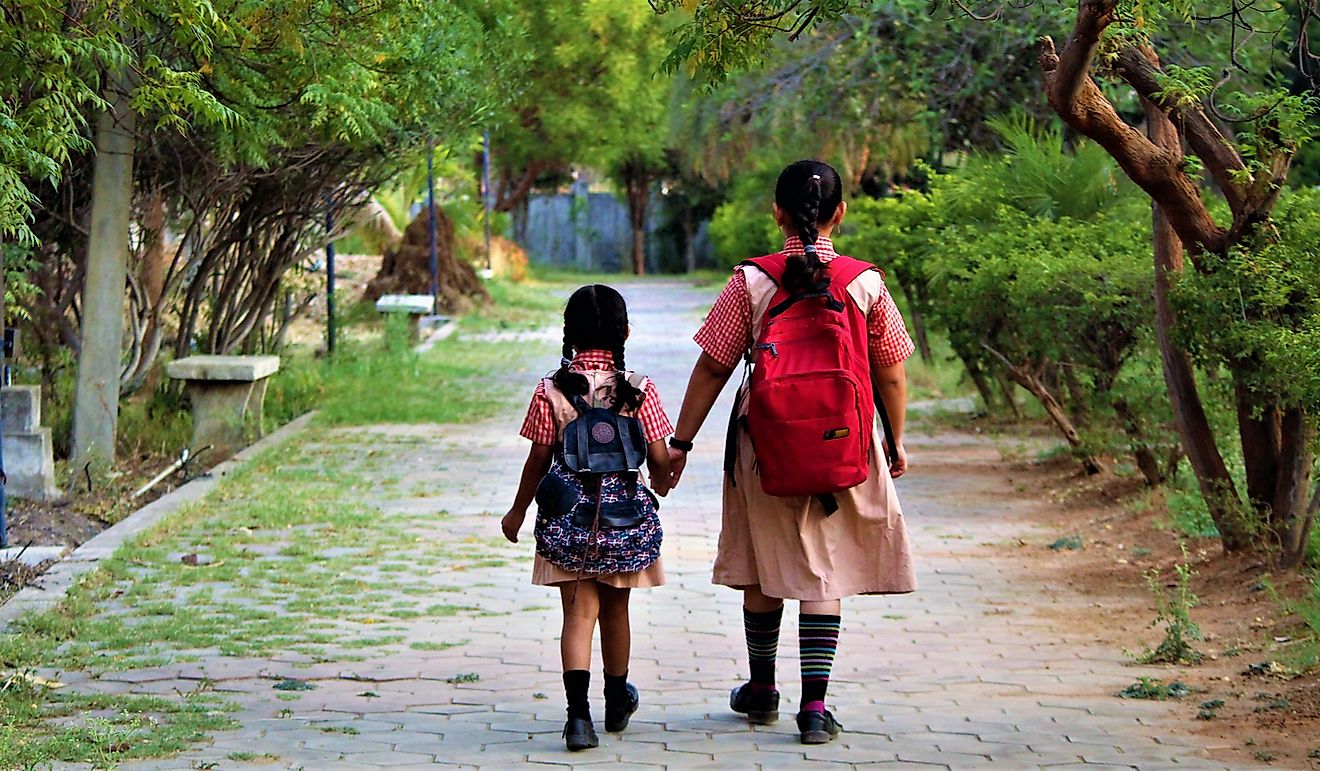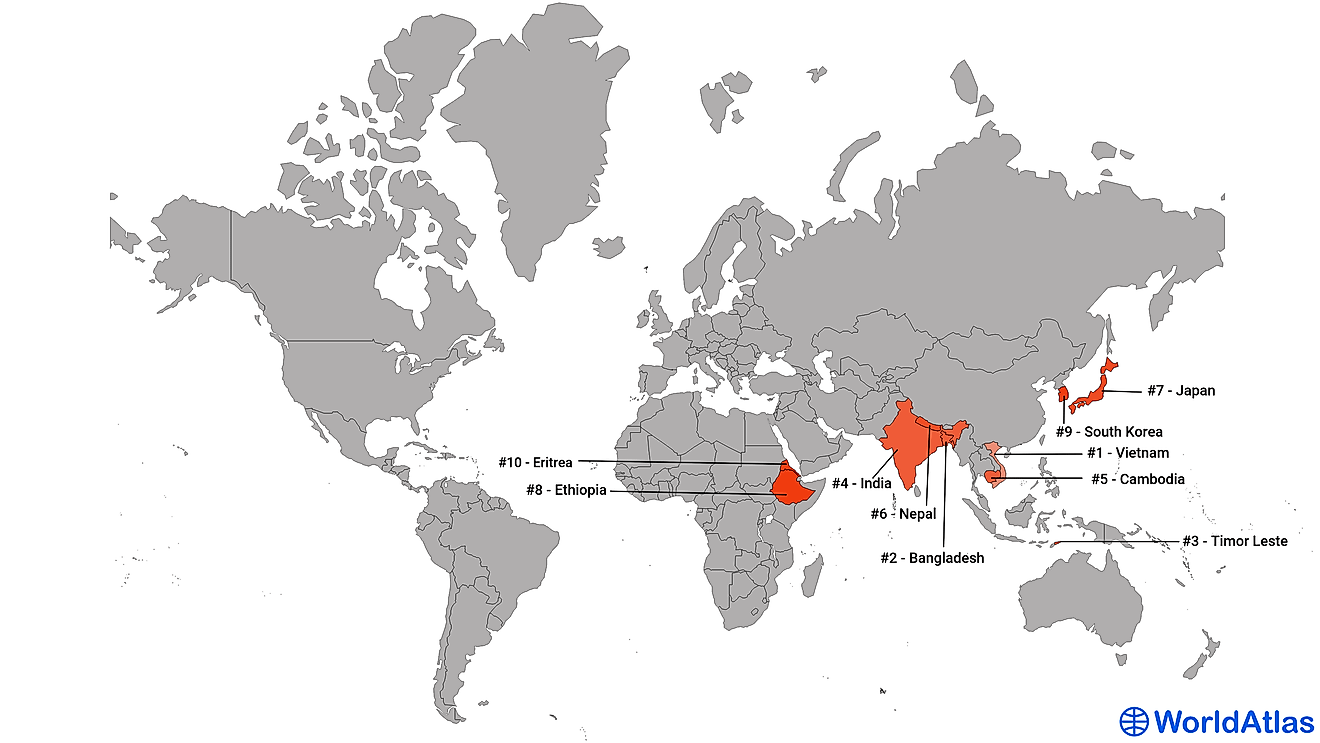Low Literacy Rates In South Asia: Causes And Consequences

South Asia occupies the southern region of Asia. It is dominated by the Indian subcontinent. Countries of South Asia are Afghanistan, Bhutan, Bangladesh, Maldives, India, Nepal, Sri Lanka, and Pakistan. South Asia occupies 11.7% of the Asian continent and 3.5% of the global land surface. It is inhabited by about 1.89 billion people, making it the most populous region in the world. India is the largest economy of South Asia, with a GDP of approximately $2.957 trillion, while Bhutan is the smallest at $2.31 billion. Just like other regions of the world, South Asia is grappling with economic, social, and political problems. Although significant progress has been made politically, with peace returning to the region after years of conflict, social and economic issues are persistent. One of the major problems experienced in South Asia is illiteracy. The global literacy rate is estimated at 86% for adults and 91% among youths. Despite the impressive figure, more than 850 million people above the age of 15 are illiterate, of whom two-thirds are women. An illiterate person is one who lacks basic reading and writing skills. Between 1990 and 2016, literacy in South Asia rose from 46% to 72%. Though this is remarkable progress, the region is home to half of the global illiterate population, a majority of whom are elderly adults and women.
A Historical Problem
South Asia is geographically knit together and share related sociocultural, historical, political, educational, and economic similarities. At the beginning of the century, the region was among the most backward economically and educationally. Though some of the challenges have been addressed, it remains an impoverished region with a GDP per capita of approximately $1,906 compared to $11,132 in East Asia and 25,078 in Central Asia. South Asia was one of the earliest civilizations in the world. Ancient scriptures portray the region as a treasure trove of education and knowledge. All the countries except Bhutan and Nepal experienced a phase of colonial rule and gained independence in the mid-twentieth century. Colonialism had a devastating impact on the development of education as the informal knowledge was uprooted in an attempt to instill western education but instead turned the region into an illiterate society. At the beginning of the 21st century, South Asia had the worst educational development and was considered the most illiterate region in the world. It was branded an anti-education society as cultural norms barred people from seeking modern education.
Causes Of Illiteracy In South Asia
Literacy and education are different, but related concepts. Literacy is the ability to read and write while education is the process of acquiring knowledge. Nevertheless, education is the key to literacy. South Asia experienced a boom in people seeking education between 1950 and 1987 as school enrollment rose from about 45 million to 260 million. Despite the quantitative progress, the quality of education was compromised as the number of illiterate adults rose from 300 million in 1970 to about 430 million by 2000. To date, illiteracy among adults is significantly higher compared to the rest of the world. Campaigns to educate adults to improve literacy rates in the region failed as 55% of adults in Bhutan and Pakistan, and 60% in Bangladesh and Nepal are illiterate.Furthermore, a large percentage of the literate population possesses basic primary education while a few have made it past high school level. Most countries in the region, except Sri Lanka and India, are unable to offer free primary education. For those who can afford it, the quality is compromised as enrollment significantly outweigh teaching resources.South Asia has the highest dropout ratio in the world as a large percentage of those who enroll for primary education are unable to complete due to economic and social factors. The quality of basic education, as reflected in the achievement of children, is unsatisfactory in most countries. Higher education enrollment in the region is also lower compared to the rest of the world. While many countries have tried to encompass vocational training in secondary education, the plan seems to have failed.
Acute unemployment among the educated is discouraging young people from progressing academically. Less than 20% of those who complete primary education transition to higher education, resulting in a low-skilled population. India has an extensive education system; the number of students in the country is higher than the total population of some countries. However, this does not guarantee a well-developed educational system. Despite a vast technical and scientific workforce, the country is unable to meet the challenges of a high population, rapid globalization, and a competitive world.One of the factors responsible for illiteracy and underdeveloped education in the region is low public investments towards the education sector. Between 1995 and 1997, Bangladesh invested 2% of its GDP in education while Pakistan invested 2.7%. As of 2018, India had increased its expenditure to 4.6% from 3%, while Pakistan had improved its spending by less than 1%. Political instability and the allocation of substantial resources towards internal security and defense have constrained Pakistan, India, Nepal, Bangladesh, and Sri Lanka. Although finances are not sufficient conditions for the development of literacy in a country, they are necessary for creating the essential condition for education, such as building schools and employing teachers.
Struggling Education Sectors
South Asia is projected to have 2 billion people by 2050, and with a larger population comes more challenges. Most countries have recognized the role of education in developing a self-sufficient population, but reforms are required to achieve this. In addition to developing infrastructure for formal education, most countries in the region have emphasized on non-formal education since it is cheaper and can instill literacy using available resources. India, Maldives, and Sri Lanka offer free primary education, but families still have to cope with the cost of books, transportation, and uniform. The decentralization of education is considered the solution to ensuring that children can enroll in schools and acquire basic education. Given the shortage of domestic resources, most countries in South Asia resort to international aid. While this has reduced the constraint on local resources, it has led to extreme dependency as every level of education rely on external aid. An unintended effect of compulsory basic education for all is the increased emphasis on primary education at the cost of secondary and higher education. Policy initiatives and public resources have been confined to adult literacy and basic education, resulting in a severe imbalance in the education system. India and Sri Lanka strive to expand secondary and higher education after reporting large numbers of dropouts between the 1970s and early 2000s. Furthermore, these countries have noted that education is not only crucial for literacy, but it also plays an essential role in economic growth and development.
Consequences Of Illiteracy
Illiteracy is a challenge to individuals as well as society. It jeopardizes the daily and future lives of affected people. A community of illiterates is not likely to prosper politically or socially. The universal consequences of illiteracy include limited knowledge and ability to understand basic information, unemployment, low income, reduced access to critical information and professional development, low self-esteem, and precarious financial status. Just like the cycle of poverty, research has shown that illiterate parents are likely to have illiterate children since no value is given to education. This creates an endless cycle of illiterate generations that are not likely to prosper economically or socially. The most notable impact of illiteracy is poverty. While South Asia accounts for half of the global illiterate population, it also accounts for a third of the extremely poor.
There are over 300 million poor people in South Asia, most of whom are women. The relationship between illiteracy and poverty is also evident in sub-Saharan Africa, where 50% of the poor population resides. Large families in rural regions are unable to afford education, and most children cannot attend primary schools. Illiterate people lack the power and knowledge to compete in the marketplace and therefore are unable to develop economically. In addition to unemployment and poverty, uneducated people are likely to engage in crime, such as robbery, to earn a living. Drug use is also rampant in South Asia as unemployed adults and youths engage in drug peddling. They are also likely to engage in creating political tension by joining militant groups and attempting to overthrow sitting governments. Warlords take advantage of such a population to recruit young men as militia. In Muslim-dominated states such as Afghanistan and Pakistan, uneducated men are radicalized into joining terror groups such as Al-Qaeda and ISIS. Due to political instability, low standards of living, and unemployment, South Asia is recording a large number of expatriates to other countries. Every year thousands of skilled engineers, doctors, architects, and teachers migrate from India to the West in search of a better quality of life, depriving the country of the necessary skills and resources to develop economically. If South Asia does not take the initiative to develop a literate population, the region should prepare for more chaos associated with unemployment and poverty.











